Jan 02, 2018 | Posted in Inspirations |


Do you make new year’s resolutions? How many of them do you keep? Here are some suggestions for interior design resolutions that, if kept, will make your daily life so much better, you’ll wonder why you didn’t address them earlier!
Resolution 1: Streamline Important Spaces – The Kitchen
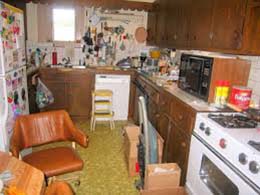
Courtesy uglyhousephotos.com
How often do you struggle to find infrequently-used tools, the right-sized storage lid, or Aunt Sarah’s prized dip and chip hostess set in your kitchen? Maybe your challenge is shelving that is too tight for your daily-use dishware, constantly requiring you to remove and replace stacks to get to what you need. Perhaps a lack of counterspace is making learning to cook more difficult than it needs to be, or not having a light in the right place to see your cookbook is a problem.
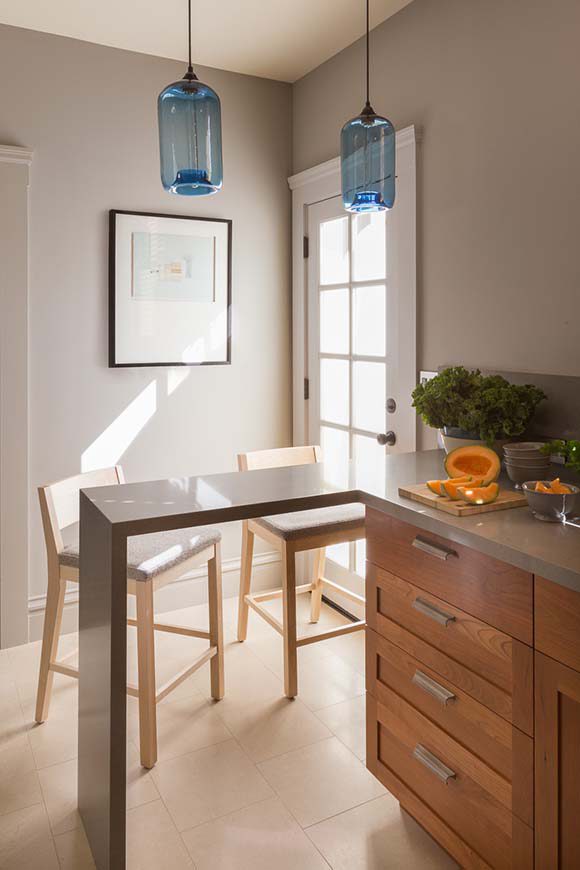
Design by Kimball Starr, photo by David Duncan Livingston.
Why start every day annoyed with your kitchen, when you could be enjoying a beautifully-designed centerpiece to your home?
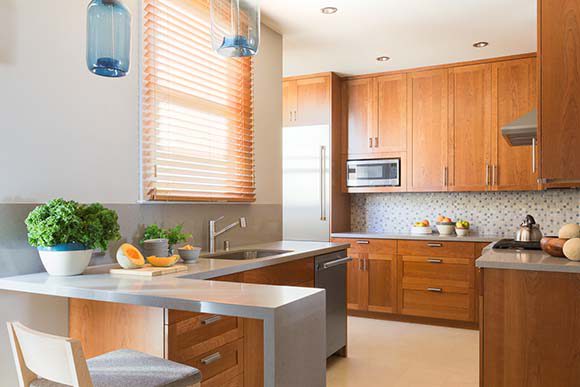
Design by Kimball Starr, photo by David Duncan Livingston.
It could be as simple as updating your cabinets and countertop surfaces with a more modern finish, changing your hardware and lighting, or you might need a complete re-design, right down to the bones. Either way, using your kitchen should be an easy and fun experience that makes you want to invite guests over!
Resolution 2: Utilize Sacred Spaces for Recharging – The Bathroom
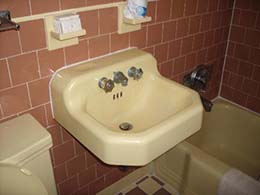
Courtesy TripAdvisor.com
You know that feeling when you come home from a long day at the office, and you just want to relax in a soothing bath, and then you see your current bathroom that makes you feel like you’re staying in a forgotten motel? Maybe the annoyance is that you have to go out to the hallway closet to get a clean towel, or that a hundred beauty products fall down when you reach for that one styling tool on the top shelf?
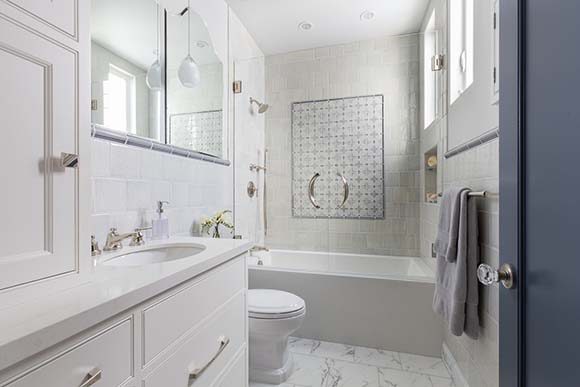
Design by Kimball Starr, photo by David Duncan Livingston.
Your bathroom should be a place of private relaxation and refreshment. It should be filled with light, pleasing to the eye as well as your other senses of touch and smell, and provide a haven to improve how you feel about yourself and your day. Ideally, it would be easy to keep clean, and have a place for everything you need, right at your fingertips.
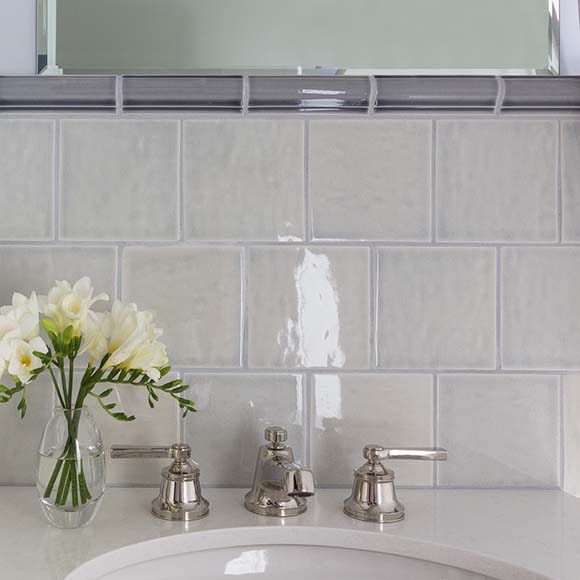
Design by Kimball Starr, photo by David Duncan Livingston.
Every last detail of your bathroom should leave you feeling refreshed and relaxed. You might want a change of tiling, a fresh coat of paint, some new hardware, or maybe you need a completely new layout to make your bathroom function more like a sacred space. After all, don’t you deserve the very best, so you can achieve your best?
Resolution 3: Bring the Outside In – Use Natural Accessories
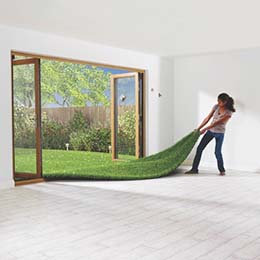
Courtesy Flagstaff Design Center
Are you one of those people who loves nature, and always wants to be outside, even when you have to be indoors? Are you drawn to wood finishes, natural fibers and the colors created by Mother Nature? Maybe you’ve admired a natural tablescape an artistic friend debuted, but didn’t know how to create one yourself.
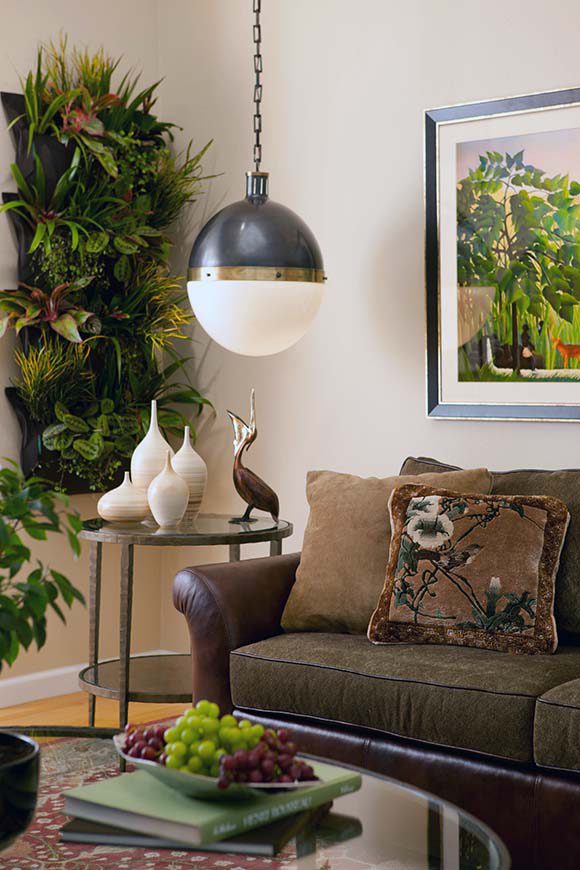
Design by Kimball Starr, photo by Eric Rorer
Designing with biophilic elements can be as simple as using natural fibers for your furniture or rugs, such as leather, sisal, wool, or bamboo, or it could be more complicated, like installing exterior louvers that block sunlight in summer months and allow sun in during the winter. You might select a vertical planter for your living room and then realize you’re not sure if that needs direct sunlight, or if watering will damage your wood flooring below. Maybe you’re not ready for a big installation and want to start with something more cosmetic.
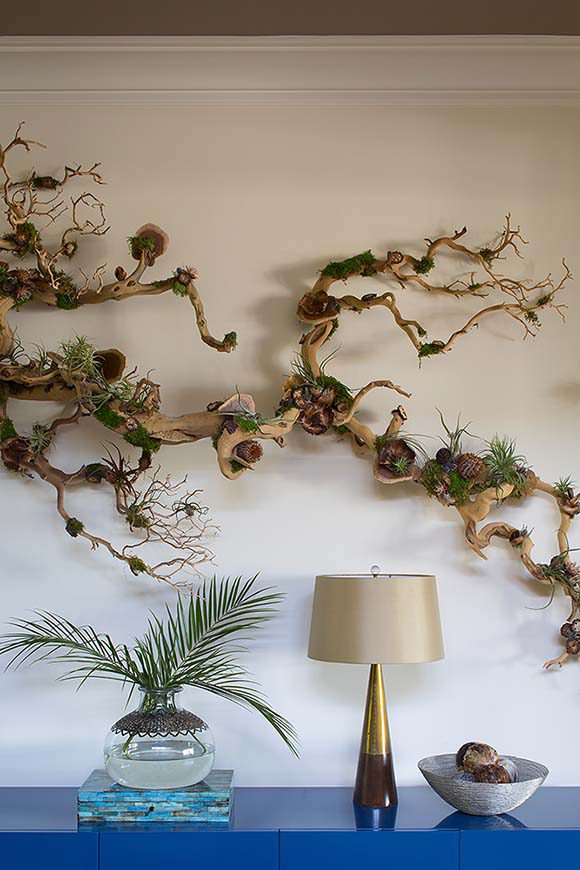
Design by Kimball Starr, photo by Eric Rorer
Whether your resolution is big or small, Kimball Starr has the experience, relationships with local contractors, and creative eye to carry it through to completion! Don’t let another day of 2018 go by without keeping your interior design resolutions – you’ll be so glad you did!
Kimball Starr Interior Design is an award-winning San Francisco interior design firm specializing in contemporary interiors. Kimball Starr “changes lives one room at a time” by creating interiors tailored specially for you. Contact her today!
Labels: bathroom, contemporary, kitchen, modern design, outdoor, residential design
Feb 01, 2017 | Posted in Starr Spotlight |


KIMBALL STARR INTERIOR DESIGN RECEIVES “BEST OF HOUZZ” FOR SERVICE IN 2017 – 5TH TIME – 50K SAVES!

If you haven’t heard by now, Houzz.com is a respected online resource for residential interior design ideas, locating a design professional, and sharing feedback on how your design project turned out.
The annual Best Of Houzz Awards are given in two categories: Client Satisfaction and Design. Client Satisfaction is benchmarked by the number and quality of client reviews a professional received in 2016. Design award winners’ work was the most popular among 40+ million monthly Houzz users in the United States and Canada.
Kimball Starr Interior Design won for Client Satisfaction a fifth time, proving that Kimball’s ideas for your home are valuable, too. Visit Kimball’s Houzz Pro Designer profile to view photos that were added to over 50,000 ideabooks, such as this contemporary desk, proving why she’s a Houzz Influencer!
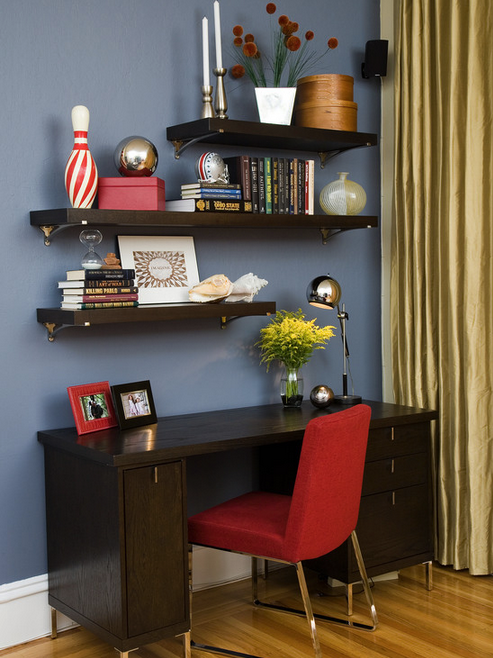
Design by Kimball Starr / Photo by Eric Rorer.
Kimball Starr is an award-winning interior design firm based in the San Francisco Bay Area. Kimball resolves your frustrations with creative and beautiful design solutions.
Labels: best interior designer, Houzz, residential design
Feb 01, 2016 | Posted in Starr Spotlight |


KIMBALL STARR INTERIOR DESIGN RECEIVES “BEST OF HOUZZ” FOR DESIGN & SERVICE 2016

Houzz.com is an established online resource for residential interior design inspiration, locating your next design pro, and sharing feedback on your design project.
The Best Of Houzz Award is given in two categories: Client Satisfaction and Design. Client Satisfaction honors are determined by the number and quality of client reviews a professional received in 2015. Design award winners’ work was the most popular among 35 million monthly Houzz users.
Kimball Starr Interior Design won in both categories, making 2016 an even better time to use some of Kimball’s ideas for your home, by visiting her Houzz Pro Designer profile today!
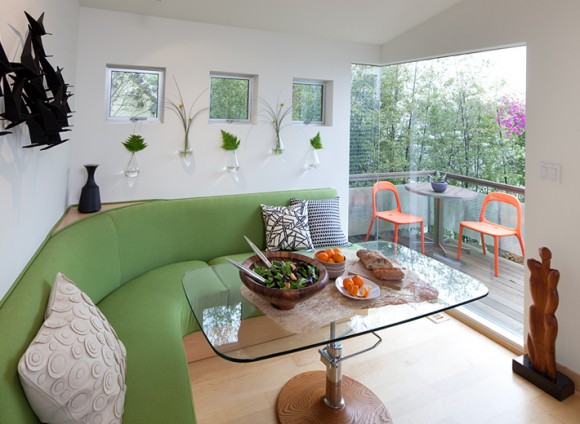
Design by Kimball Starr / Photo by Eric Rorer.
The photo above was saved to over 6,000 ideabooks on Houzz.com! This San Francisco residence spotlights a custom design by Kimball that adjusts from coffee table to dining table in an instant, making use of every available inch in a property of less than 600 square feet, total! Let Kimball solve your design challenges, too.
Award-winning interior designer Kimball Starr is a contemporary interior design expert based in the San Francisco Bay Area. Kimball works to “change lives one room at a time” with innovative and creative interiors.
Labels: best interior designer, Houzz
Dec 18, 2015 | Posted in How To & Decorating Tips, Inspirations |


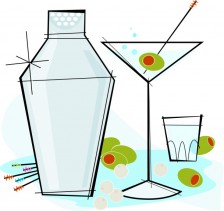
artwork courtesy Blisstree.com
Finishing up our series pairing design and drinks – we round out the holiday season with a modern bachelor pad paired with a Bloody Mary, inspired by the color of the living room’s design.
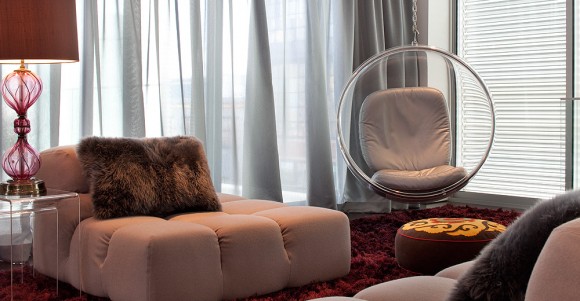
Kimball Starr Interior Design / photo by Eric Rorer
In the sumptuous San Francisco apartment above, featuring a lampshade and high pile rug in Pantone’s color-of-the-year Marsala, the decor exudes luxury that makes you want to mix a cocktail and have a seat. The fabrics were selected to provide tactile enjoyment and invite lounging. Clear Lucite nesting tables and hanging Aarnio bubble chair allow the eye to travel across the space more freely while giving the feel of space-age technology.
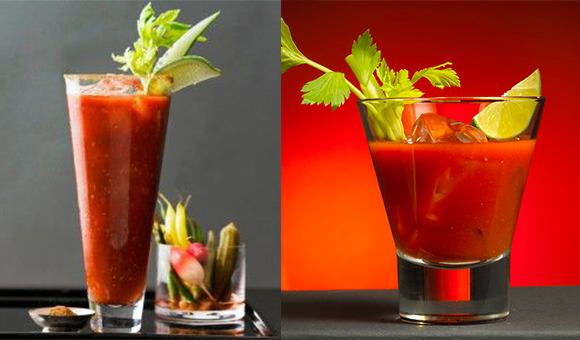
Left: Bloody Mary courtesy Liquor.com / Right: Virgin Mary courtesy wikia.com
To enjoy this living room fully, we recommend a Bloody Mary, a drink often consumed by the characters on Mad Men. Get more pairing ideas on our Pinterest board Drinks & Decor – Pairings!
Ingredients
Celery salt
1 Lemon wedge
1 Lime wedge
2 tsp Prepared horseradish
2 dashes Worcestershire sauce
1 pinch Ground black pepper
Garnish: 1 celery stalk & lime wedge
Directions
- Pour some celery salt onto a small plate
- Rub the juicy side of the lemon or lime wedge along the lip of a pint glass
- Roll the outer edge of the glass in celery salt until fully coated
- Fill with ice and set aside
- Squeeze the lemon and lime wedges into a shaker and drop them in
- Add the remaining ingredients and fill with ice
- Shake gently and strain into the prepared glass
- Garnish with a celery stalk and a lime wedge
For a non-alcoholic version, how about a Virgin Mary? Mix tomato juice, 3 sauces, lime and a couple more ingredients you can find via our Pinterest.
If you need help designing an indoor space that impresses, contact Kimball Starr today!
Kimball Starr Interior Design is an award-winning San Francisco interior design firm specializing in contemporary interiors. Kimball Starr “changes lives one room at a time” by creating interiors tailored specially for you.
Labels: contemporary, drinks & decor, lifestyle, living room
Dec 04, 2015 | Posted in Before & After |


What do you do when you have only a very small amount of room, but you need to make that space really work for you? Call Kimball Starr Interior Design!
In this small Pacific Heights dining room, you can see that it looked a bit like an afterthought, tacked onto another bigger space. The wall color was fighting with the floor color, and it didn’t seem like a place you’d want to entertain. We saw the potential in this room and made a few adjustments that make all the difference.
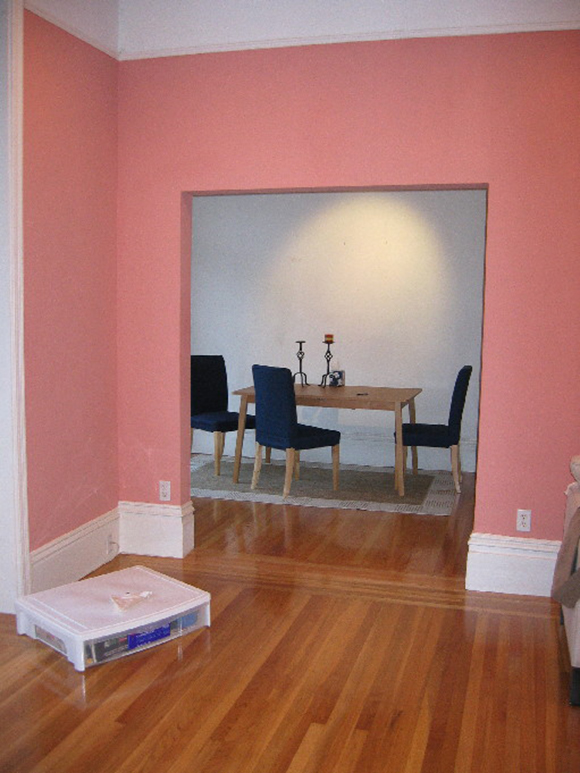
BEFORE: Pacific Heights Dining Room
Changing the walls to a warmer color, using dark contrasting wood furniture and a bright, fun rug bring this small space together. The decorative wall art is reflective, helping to bounce light around the room and make it feel bigger. The bench conserves space and makes it easier to move through the area, while the red chairs match the rug for an additional pop of color.
Also, the clever dining table rotates 90 degrees, and the ends flip out to provide additional seating for 2 more guests.
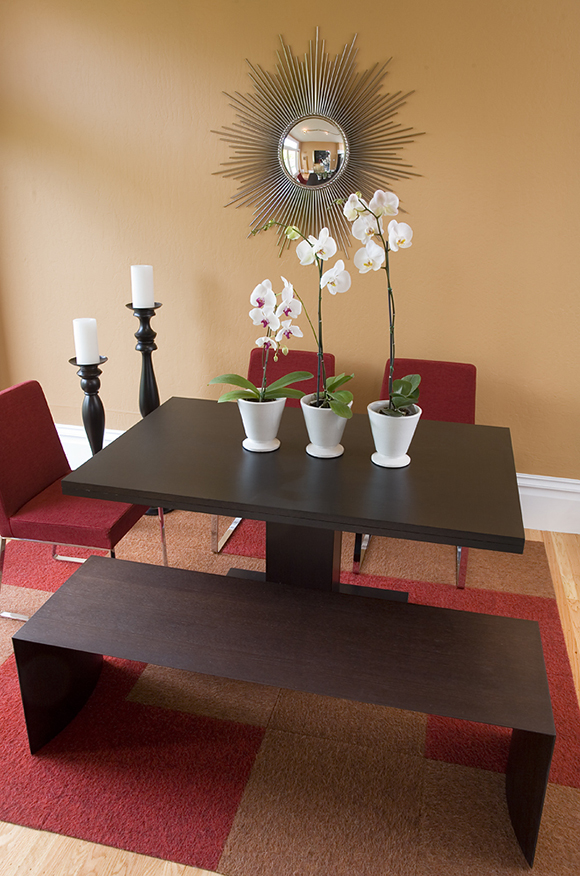
AFTER: Kimball Starr Interior Design / Photo by Eric Rorer
Even smaller is this tiny closet in a tight bedroom in the same home. They needed the storage but it just didn’t look attractive.
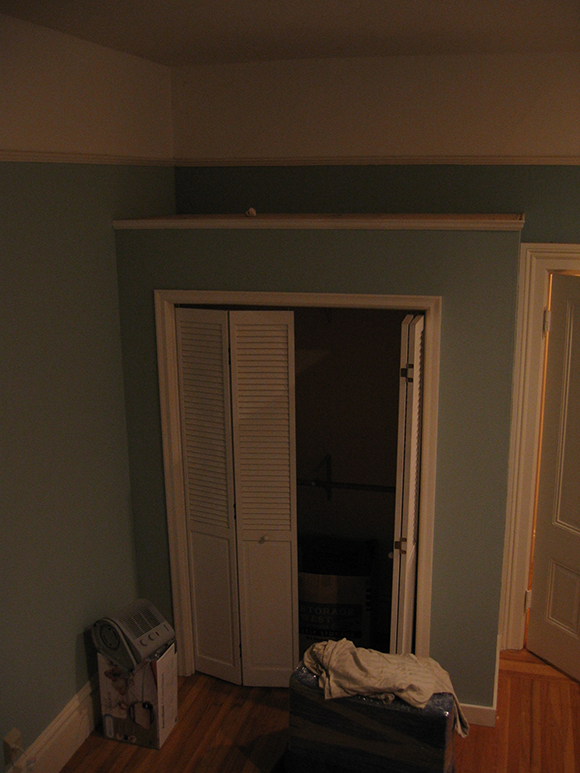
BEFORE: Pacific Heights Closet
We stepped in and designed a more accessible closet by removing the bi-fold doors and replaced them with a sensuous fabric that conceals the contents and makes it easier to move past in close quarters. Now it’s a lovely addition to the room and is both pretty and more functional.
Repeating the color scheme and reflective quality in the accent pillows on the bed creates a nice rhythm. The closet had been dark and difficult to find anything inside without any internal lighting. Kimball resolved this by running a set of lights from a nearby electrical outlet. Now they can both access their storage and see what’s inside!
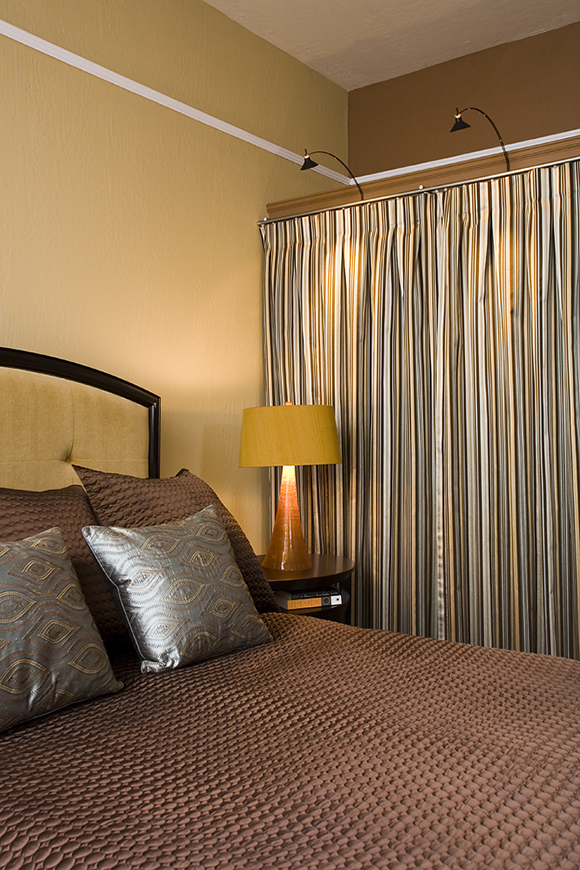
AFTER: Closet by Kimball Starr Interior Design / Photo by Eric Rorer
If you want to take your home from sad to fab, call Kimball Starr for guidance. You’ll be glad you did!
Kimball Starr Interior Design is an award-winning San Francisco interior design firm providing home design throughout the SF Bay Area.
Labels: closet, dining room
Nov 23, 2015 | Posted in How To & Decorating Tips |


California has been surviving the worst drought in recent history, the last one being from 1985-1991. San Francisco’s local government is cracking down on wasteful residential and commercial water usage with a call for a 10% reduction in overall water use and a 25% reduction in outdoor irrigation.

Wrapping up our series of blogs focusing on creating eco-conscious interior design, here are tips and products that will make conserving water simple and beautiful. If you missed our previous blog posts, see tips on how interior design choices can conserve water with Washing Machines and Low-flow fixtures.
So what can we do to help reduce water usage? Today’s edition: Combinations that use sink greywater to flush the toilet!
If you’re short on space or even if you have plenty of room and want to reuse the greywater that goes down the drain every time you wash your hands, sink and toilet combos are an excellent idea.
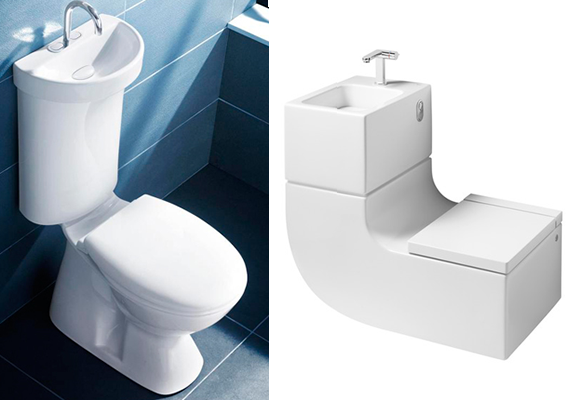
Left: Caroma Profile Smart 305 Round Front sink and toilet combo / Right: Roca W+W wall hung WC and basin.
The Caroma Profile Smart 305 Round Front is a unique design with advanced performance: A high-efficiency dual flush toilet using just 1.28 or .8 gallons (4.8/3 liters) per flush. After flushing, fresh cold water is directed through the faucet for hand washing and drains into the tank to be used for the next flush. 27.75″L x 15″W x 35.875″H with a bowl height of 15″, this water-saver will fit right into any bathroom or half-bath.
In a more daring shape, the W+W from Roca brings elegance and sustainability to the bathroom. This sleek design houses a nifty self-contained greywater system that is capable of reducing water use by up to 25% compared to a standard 1.59 or .79 gallon (6/3-liter) dual-flush toilet. The toilet is just 16.14″L x 20.47″W x 19.69″H and the sink is 11″L x 13.38″W x 19.69″H, beautifying any loft space or small apartment while taking up very little room.
If you need help identifying ways to conserve water with your next bathroom remodel, contact Kimball Starr Interior Design for beautiful and efficient design! We make water conservation beautiful.
Kimball Starr Interior Design is a San Francisco design firm that offers interior remodels and decorating services for homes throughout the SF Bay Area. Our designs are focused on creating modern and eco-conscious interiors for relaxed California living.
Labels: bathroom, eco-conscious, small space solutions, sustainable design




































